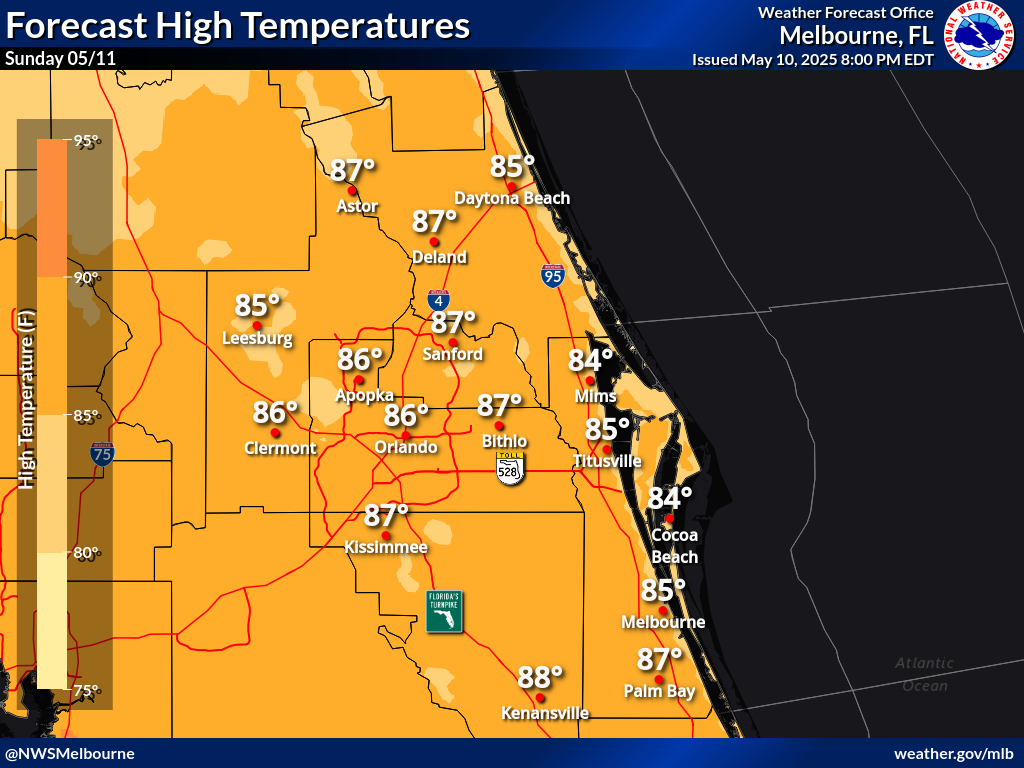|
Measuring Heat Impacts
The air temperature can become especially hazardous when it exceeds the human body's normal temperature of 98.6°F. At this point, heat begins to build within the body, or at lower temperatures when performing strenuous activities.
The NWS has three different forecast heat stress tools. Each of these tools (Heat Index, Wet Bulb Globe Temperature, and the experimental HeatRisk) have strengths and limitations and are designed for different audiences. The application of each tool must be for the appropriate audience to ensure effective utilization and heat stress awareness.
| Tool #1: Heat Index |
|
The Heat Index is a measure of how hot it really feels when relative humidity is factored in with the actual air temperature. As an example, if the air temperature is 96°F and the relative humidity is 65%, the heat index--how hot it feels--is 121°F! Heat index is an important consideration for the human body's comfort and is often called the "feels-like" temperature.
What are some considerations? Heat index may not be the best indicator of heat impacts in areas with low humidity, or an accurate measure for active individuals. Additionally, heat index values are calculated for shady, light wind condition - exposure to full sunshine can increase heat index values by up to 15°F!
|
|
NWS Heat Products
|
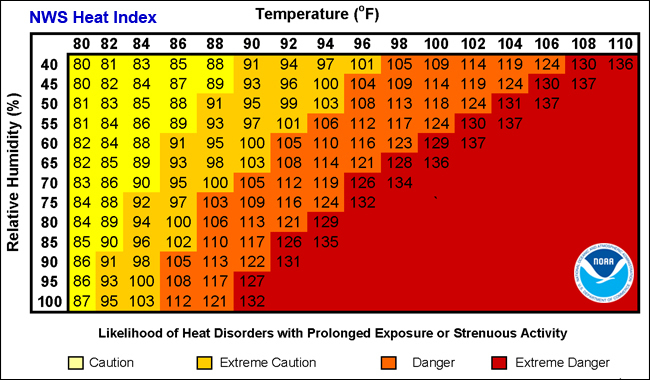 |
|
The National Weather Service issues official heat related products based on the heat index forecast.
- Extreme Heat Warning - issued within 12 hours, or up to 24 hours in advance (if confidence is high) when Heat Index values are expected to reach 113°F or higher.
- Extreme Heat Watch - issued during the first 48 hours when Heat Index values could reach 113°F or higher.
- Heat Advisory - issued within 12 hours, or up to 36 hours in advance (if confidence is high) when Heat Index values are expected to reach 108° to 112°F.
|
| Tool #2: NWS HeatRisk |
|
HeatRisk provides a forecast risk of heat-related impacts and is divided into five categories, taking into consideration 1) how unusual the heat is for the time of the year, 2) the duration of the heat including both daytime and nighttime temperatures, and 3) if those temperatures pose an elevated risk of heat-related impacts based on data from the CDC.
What are some considerations? HeatRisk provides guidance for decision-makers and heat-sensitive populations who may need to take action below heat advisory and extreme heat watch/warning thresholds.
More details and graphics can be found on the NWS HeatRisk website and a 1-Pager is available here.
|
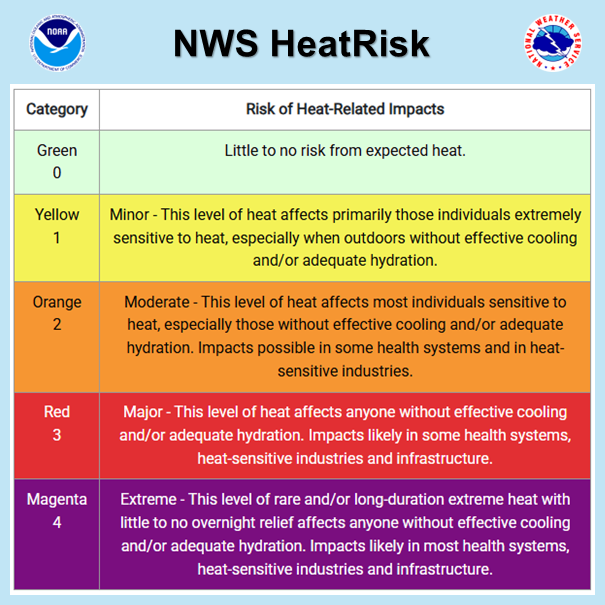 |
Heat Sensitive Groups
Who should take action at levels below current heat advisory and warning thresholds?
- The elderly and the very young.
- Those on certain medications and/or those with preexisting conditions that make them more sensitive to heat (your doctor can let you know if this is you).
- Those working outdoors - especially new workers, temporary workers, or those returning to work after a week or more off, along with workers working indoors in a non-cooled space.
- Those exercising or doing strenuous activities outdoors during the heat of the day - especially those not used to the level of heat expected, those who are not drinking enough fluids, or those new to that type of activity.
- Those without a reliable source of cooling and/or hydration - this includes otherwise healthy individuals who are attending outdoor activities and are exposed to the heat and may not recognize the early symptoms of heat stress.
- Those not acclimated to the level of heat expected - especially those who are new to a much warmer climate.
|
| Tool #3: Wet Bulb Globe Temperature (WBGT) |
|
Wet Bulb Globe Temperature uses temperature, humidity, and other weather parameters like sun angle, cloud cover, and wind. WBGT is calculated in direct sunlight, but does take into account forecast sky cover. The tool is an effective indicator of heat stress for active populations. More information on WBGT can be found here.
What are some considerations? This parameter is best suited for active people such as outdoor workers, athletes, marching band, and others performing strenuous outdoor activities. WBGT values will typically be lower than Heat Index, which may cause the values to be perceived as a lower risk.
|
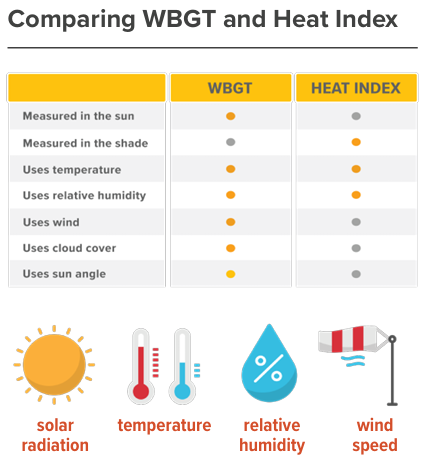 |
|
WBGT Threat Level
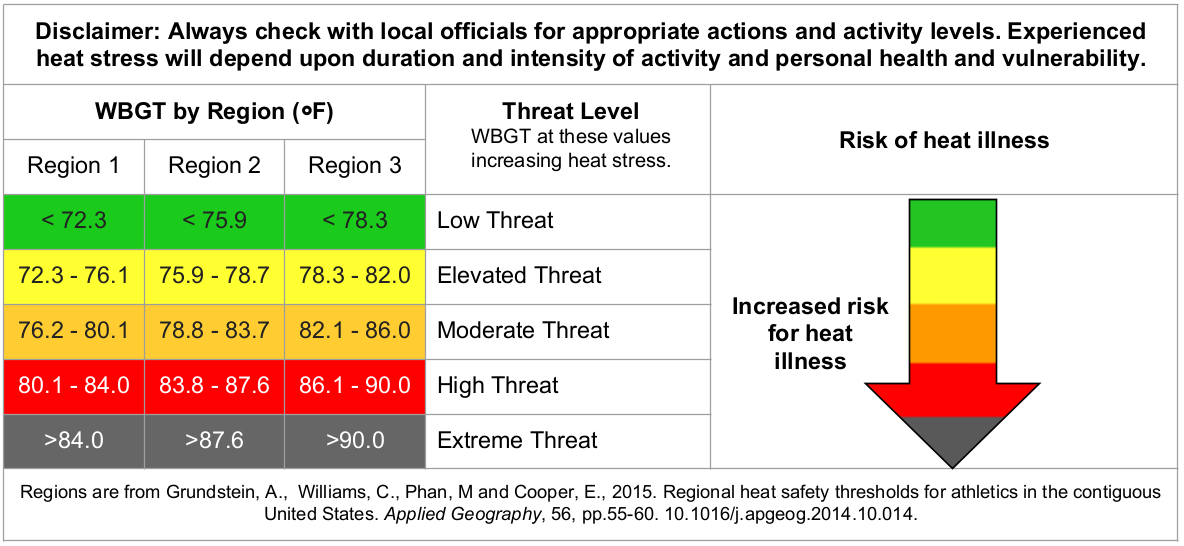
Wet Bulb Globe Temperature threat levels vary by region. Florida, and much of the southern tier of the United States, is within Region 3.
|
|
